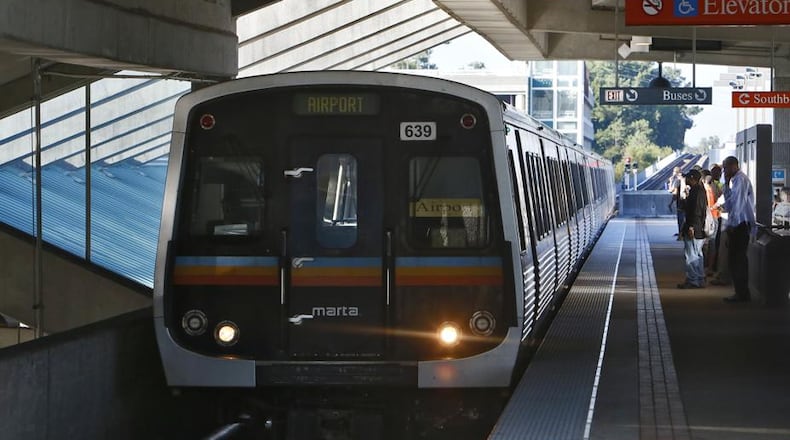Gwinnett’s Board of Commissioners took another step Tuesday toward expanding the county’s transit offerings.
The board, minus absent District 4 Commissioner John Heard, voted to adopt the county's historic transit development plan, a non-binding study that's been in the works for more than a year. Building a heavy rail line from the Doraville MARTA station in DeKalb County to either the Norcross area or the Gwinnett Place Mall area are among the plan's many recommendations.
“I think it’s indicative of the support the board feels for the plan, for the process that was used to create it, and I’m just excited we’re to this point,” Commission Chairman Charlotte Nash said.
Original drafts of the transit development plan included a recommendation for a roughly 4.5-mile heavy rail extension from Doraville into Gwinnett and the area near I-85 and Jimmy Carter Boulevard.
The final version suggested extending nearly seven more miles of heavy rail from the potential transit hub near Jimmy Carter all the way up to the Gwinnett Place Mall area, where the county has already acquired land to expand its existing transit station. But while every other potential project in the plan — which also includes several "bus rapid transit" lines and greatly expanded local bus service — has potential revenue streams identified, the longer rail line does not.
The roughly $5.4 billion in projects included in the “original” plan is based on estimates of funding from state and federal sources, fare box revenues and on the county’s residents approval of a new 30-year sales tax.
The next step for officials will be to decide whether or not to call for a referendum on transit expansion this fall. Nash has said that decision would likely need to be made by August in order to get a question on November's ballots.
An agreement with MARTA would have to be worked out beforehand.
The ATL, the new regional transit agency created by legislation passed earlier this year, will not legally exist until Jan. 1. That means a Gwinnett referendum before then would involve MARTA technically being the administrator of revenues from any one-cent sales tax approved by voters.
Nash described it as “a transit tax that would be spent through a contract with MARTA.”
About the Author
Keep Reading
The Latest
Featured


